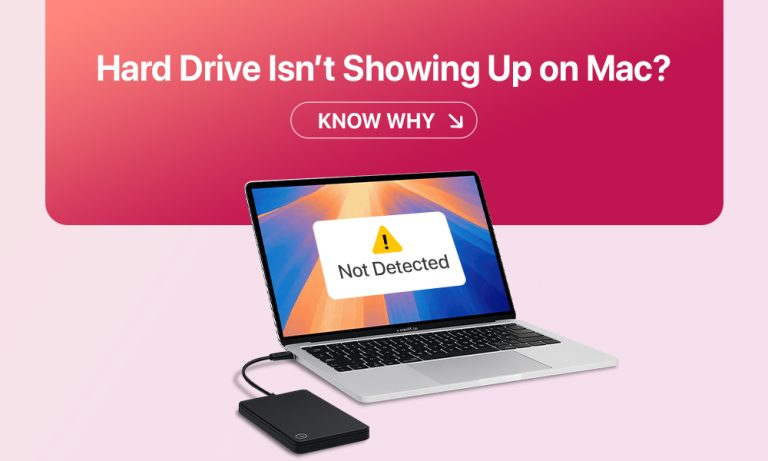External Hard Drive Not Showing Up on Mac: 5 Ways to Fix It
Mac failing to detect an external hard drive is a common experience. It may look like your e external hard drive has failed, but there are multiple factors to consider. External hard drives fail to show up when physical damage occurs, but software-related problems also lead to this issue.
This article investigates the primary reason for Mac not recognizing an external hard drive and provides 5 solutions for fixing it.
Why Mac Doesn’t Recognize External Drive & Possible Solutions
The first step to resolve any issue requires identifying its root cause. If a Mac fails to detect an external hard drive, users need to determine if the problem stems from hardware damage or software problems. We need to analyze both cases separately.
Reason 1: Mac Hard Drive Not Showing Up Due to USB Connection Issues
The initial step to resolve Mac external drive recognition problems requires verifying whether the drive is connected properly to the Mac. A drive that lacks sufficient power from its cable will not mount properly. The USB ports on your Mac could be the reason behind this problem.
Solution: Here are several ways to fix problems with cable connection:
- To begin, connect the drive with a different cable to check if the cable itself is problematic. Inspect the cable thoroughly to detect signs of physical damage, if any, and double-check its connection to the USB port.
- Next, the USB port works as intended. Plug the drive into a different USB port. If the external drive mounts this time, it clearly indicates a faulty port, not an external disk.
- Finally, connect the drive to a different Mac. If the drive still fails to mount in a different device, the problem is likely related to the drive, not the cable you’re using or your original Mac.

Reason 2: The External Drive is Hidden in Finder
Suppose your external drive is connected correctly but still doesn’t mount. Sometimes, this happens because of the system settings (preferences) you set up. If this is the case, the problem is fixable, and you can do it by simply editing the settings and specifying what items should be displayed on your desktop.
Solution: To fix the problem with system settings, follow these steps:
- Open Finder by clicking on its logo in the Dock panel.
- Click on Finder at the top-left corner of your screen (next to the Apple logo).
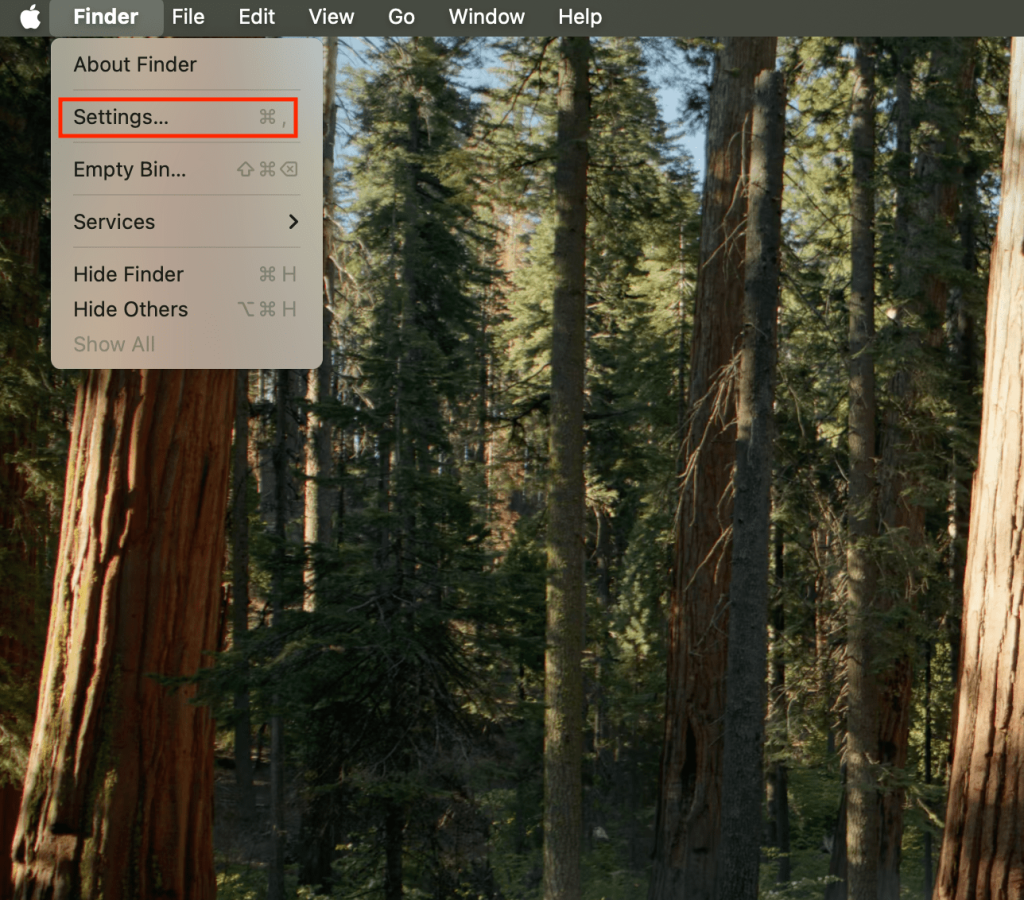
- Open Settings and proceed to the General tab.
- Check if external drives are marked as items displayed on the desktop.
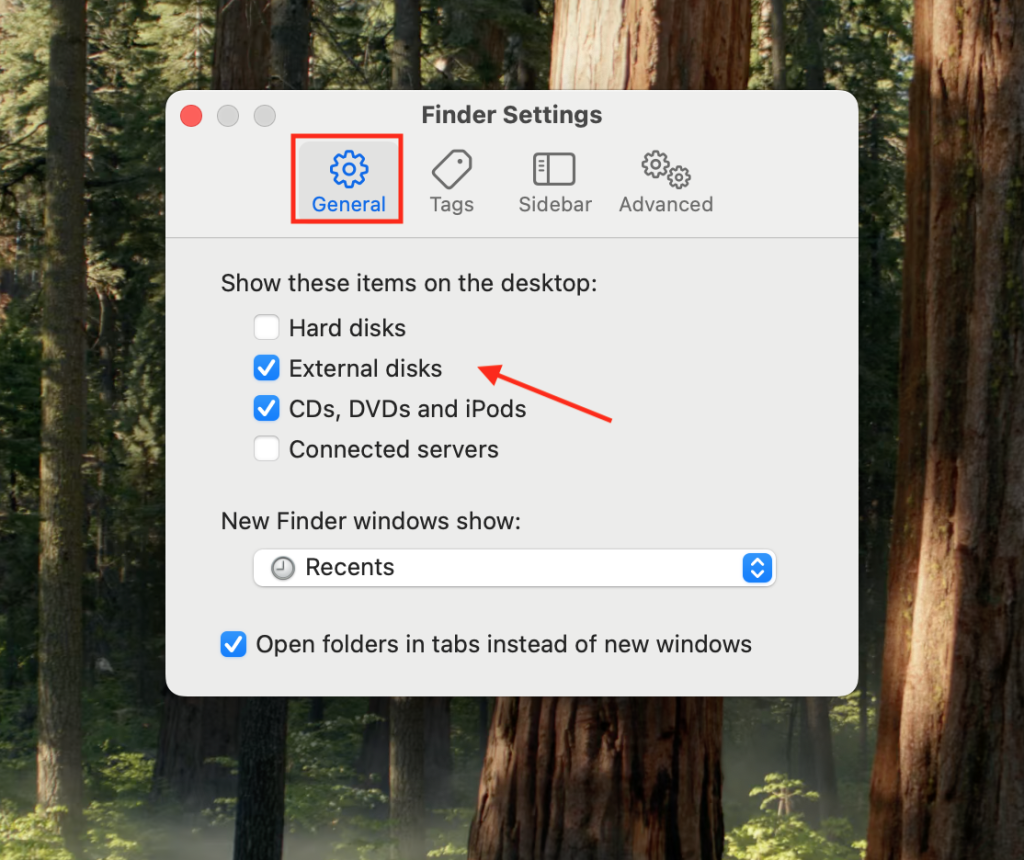
Reason 3: The File System Is Incompatible
Choosing a readable format for storing files on your external drive is essential. If the format is incompatible, the hard drive will not show up on Mac. Before formatting the drive to the desired file system, ensure your device supports it.
| Windows PC | NTFS, ExFAT |
| Mac (before Sierra) | HFS+ |
| Mac (starting from High Sierra) | APFS |
| Windows PC & Mac | FAT32 (with certain types of files to be stored) |
Connecting it to a Windows PC, you can easily check if the problem with the external drive not showing up on your Mac appears due to the wrong file format. If the Windows computer detects the drive, you are dealing with a file system format your Mac doesn’t support. So, you can try reformatting the drive to a suitable file system type.
Solution: To format an external drive using the Disk Utility tool:
- Use the Spotlight Search to open Disk Utility.
- To the left of the Disk Utility window, select your external drive.
- Hit the Erase button in the top-right corner of the menu.
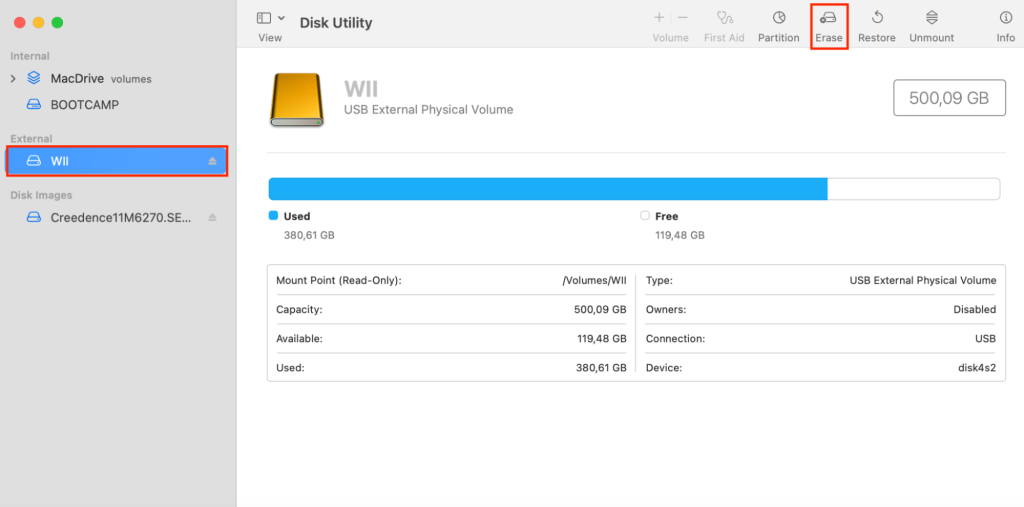
Warning: Clicking Erase will remove all data stored on the chosen hard drive. Ensure you backed up important files before executing this step.
- Choose a desired format and proceed with reformatting the drive.
Reason 4: The Drive is Protected with a Password
Some Mac users choose to protect their external drive with a password. Users typically set this password when they start using the device, and it’s common to forget about these protective measures, especially when the drive isn’t often used. So, when your Mac’s hard drive is not showing up, double-check for the password box on the screen and insert it if necessary.
Solution: To avoid/ remove password requests:
- If you want to stop getting a password requirement box when you connect the drive, choose to save the password in your keychain.
- If you want to remove the password, decrypt the drive: Finder > Right-click the Volume > Decrypt.
Reason 5: External Drive Is Corrupted
Finally, your Mac may not be detect the external hard drive if is faulty or damaged. You can start by running First Aid to identify and repair any errors.
Solution: To repair the external disk using First Aid, follow the steps below:
- Open the Disk Utility tool via Spotlight Search.
- Select the drive’s name in the left side bar of the Disk Utility menu.
- Click the First Aid button and run the First Aid to scan the volume for errors.
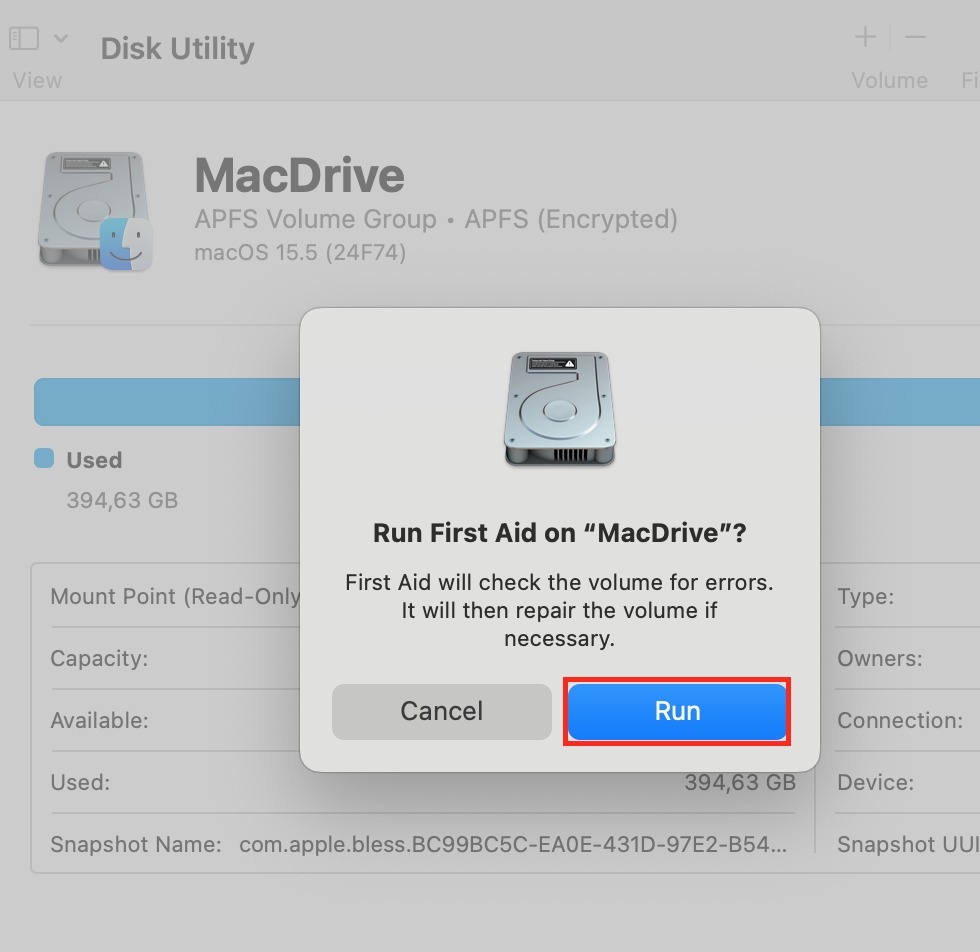
- Fix errors, if any, and check whether you can access the drive now.
Taking the above-described steps will likely fix an external drive not showing up on a Mac. You can never entirely rule out the chance, though, that your external drive might have been damaged and your Mac cannot recognize it.
Use these steps to determine whether a malfunctioning disk is causing an external drive issue: Apple Menu > System Settings > General > Storage > All Volumes.

If your external disk is displayed under the USB section but inaccessible, you may suspect physical damage to this device. In such a case, data recovery software is advised to recover files from the faulty drive.
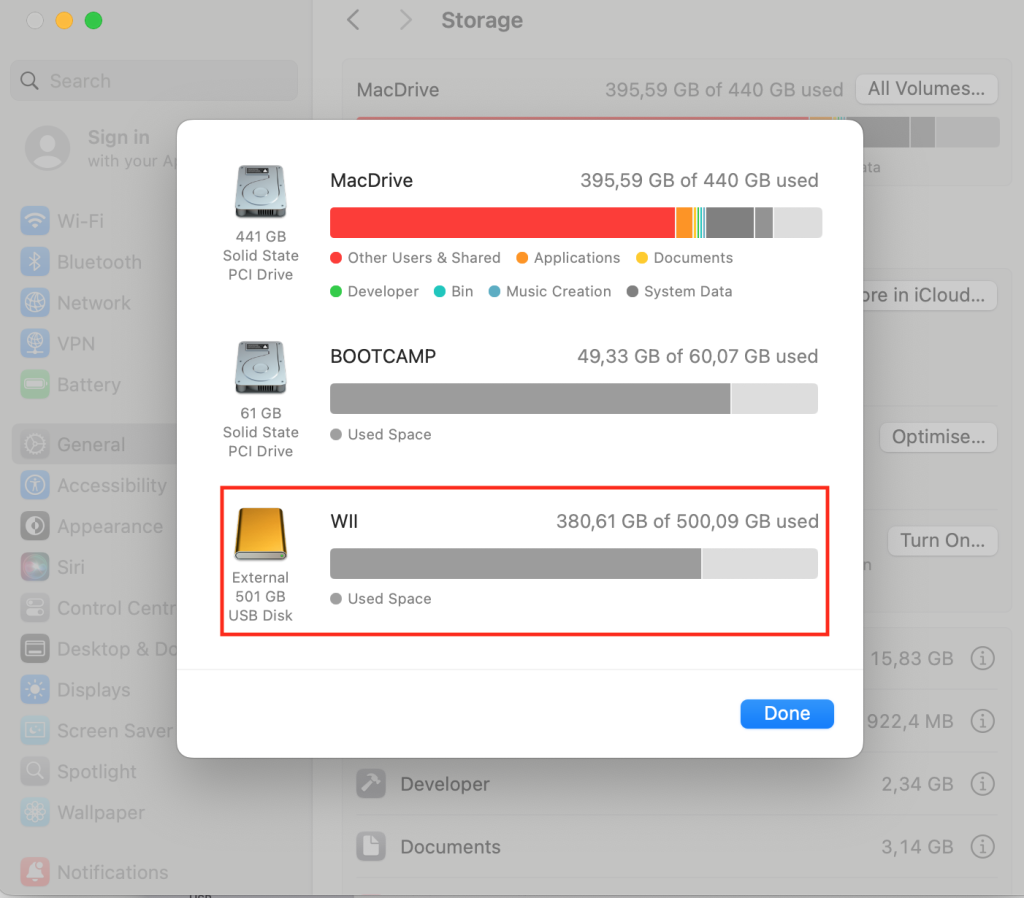
External Hard Drive Not Showing Up: Final Thoughts Proper external hard drive mounting can be problematic due to cable or USB port malfunctions, the wrong file format, or physical damage to the disk. Using macOS built-in tools or modifying system settings is often enough to fix the issue. If the external disk still doesn’t show up after taking the steps described above, consider seeking professional assistance or replacing the drive altogether.


